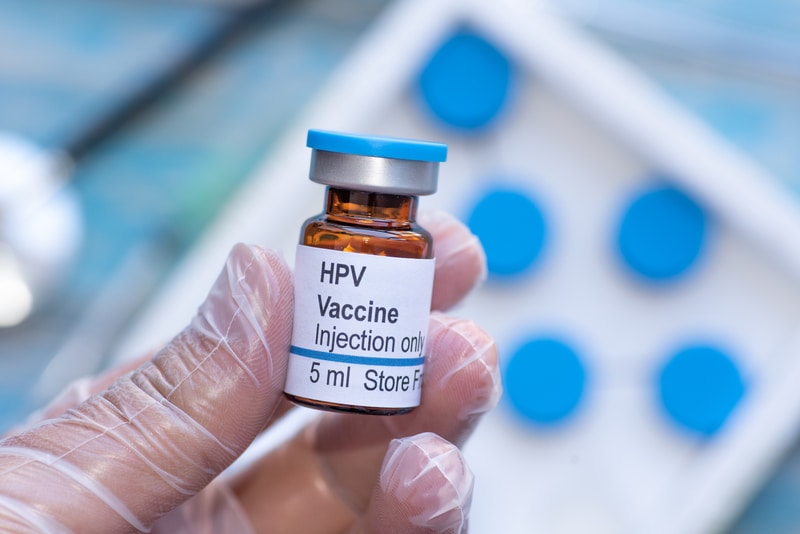Cervical cancer remains one of the highest causes of cancer death for women living in the United States. This type of cancer forms within tissues of the cervix, and it’s often slow-growing with minimal symptoms. Fortunately, cervical cancer is also one of the most preventable types of cancer in females due to the human papillomavirus vaccine (HPV). The HPV vaccine effectiveness and screening methods play a crucial role in preventing HPV and cervical cancer.
What is HPV?
Human papillomavirus infection is the most common type of sexually transmitted infection. Approximately 79 million people, usually in their late teens or early 20s, are infected with HPV, while 14 million are most likely to be infected each year. HPV symptoms aren’t always noticeable, but they can cause genital warts or warts inside the throat. Most HPV infections don’t cause cancer, but high-risk HPV infections that last for a long time can eventually result in cancer.
HPV Vaccine Recommendations
The Centers for Disease Control and Prevention (CDC) highly recommends the HPV vaccine in girls and boys between 11 to 12 years of age. The HPV vaccine is also recommended for women between 13-26 and men 13-21 who have yet to be vaccinated. Only around 57% of adolescent girls and 35% of adolescent boys have the first shot of the HPV vaccine, usually administered in a three-dose series. Adolescents that aren’t fully vaccinated are more vulnerable to cancers caused by HPV.
January Cervical Cancer Awareness Month
January is always Cervical Cancer Awareness Month, which makes now the perfect time to discuss how the HPV vaccines play a crucial role in preventing cancer. Improving the HPV vaccination rates is one of the top public health priorities, as healthcare professionals need to promote awareness about HPV cervical cancer. Building awareness about the relationship between HPV and cervical cancer will help to increase vaccination rates further. Checking out resources from the National Foundation for Infectious Diseases (NFID) is also crucial in learning more about HPV cervical cancer. The CDC estimates that improving rates for HPV vaccination to 80% would help prevent 53,000 cervical cancer cases among girls in the United States.
Cervical Cancer Symptoms
Understanding cervical cancer symptoms are essential in staying proactive against this disease before it’s too late. These symptoms usually appear during the early stages of cervical cancer. These symptoms include unexplained pelvic or back pain, blood spots following periods, or pain during sexual intercourse. Reporting these symptoms to your doctor is critical in taking care of your health.
Cervical Cancer Risk Factors
HPV infection remains the leading risk factor for cervical cancer. HPV can often spread from one person to another with skin-to-skin contact, such as sexual activity. Different kinds of HPV can cause warts to appear throughout the body, such as the hands, feet, lips, or tongue. Smoking can also significantly increase the chance of cervical cancer. A weakened immune system, chlamydia infection, long-term use of oral birth control pills, and multiple full-term pregnancies can also increase the risk of cervical cancer.
Additional Benefits of the HPV Vaccine
The HPV vaccine helps to prevent cancer in both men and women. Nearly 85% of people will get an HPV infection in their lifetime, as getting vaccinated can significantly reduce the chance of cancer. Over 135 million doses in the United States have been administered in the last 15 years, as it’s a safe and effective option for adolescents. You can also schedule these vaccines at any time, whether it’s an annual checkup, physical, or other vaccine visits. This proactive approach can help prevent HPV cancer in women due to its effectiveness. According to the CDC, these infections have dropped 88% with teen girls and 81% with young women due to the HPV vaccine.
Closing Thoughts
Building more awareness about the importance of the HPV vaccine is essential in preventing cervical cancer. Learning about cervical cancer risk factors is also vital in educating the public. January is cervical cancer awareness month, as understanding how vaccines can prevent cervical cancer can help to avoid many future deaths. HPV remains the most common sexually transmitted infection, as increasing HPV vaccine rates can play a crucial role in staying healthy. Ultimately, receiving an HPV vaccine is essential in staying proactive and limiting the chance of getting HPV and cervical cancer.

